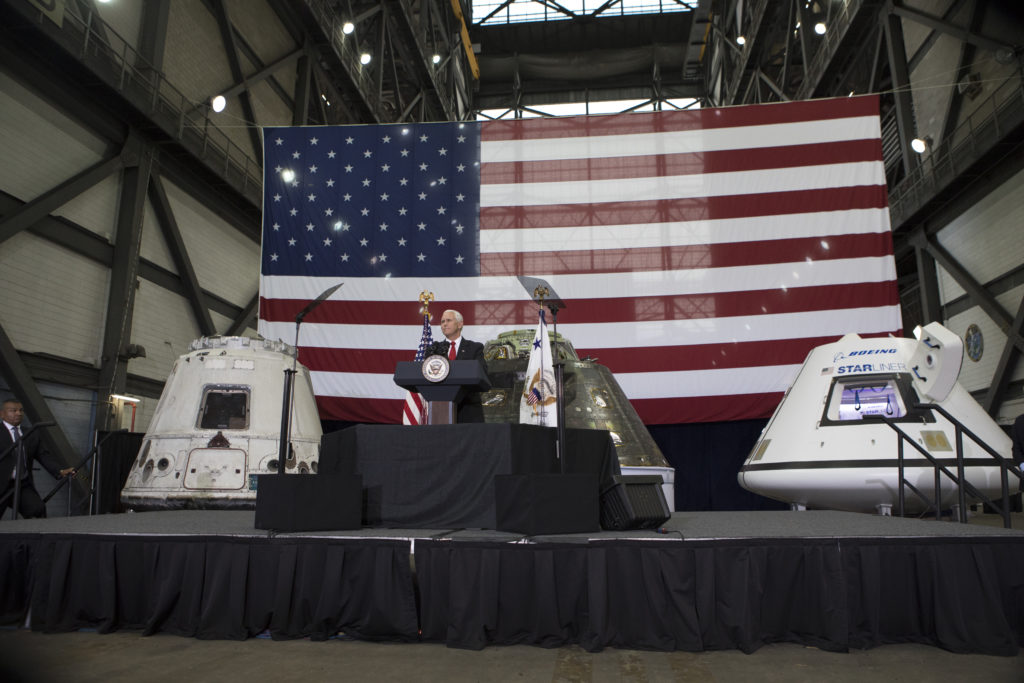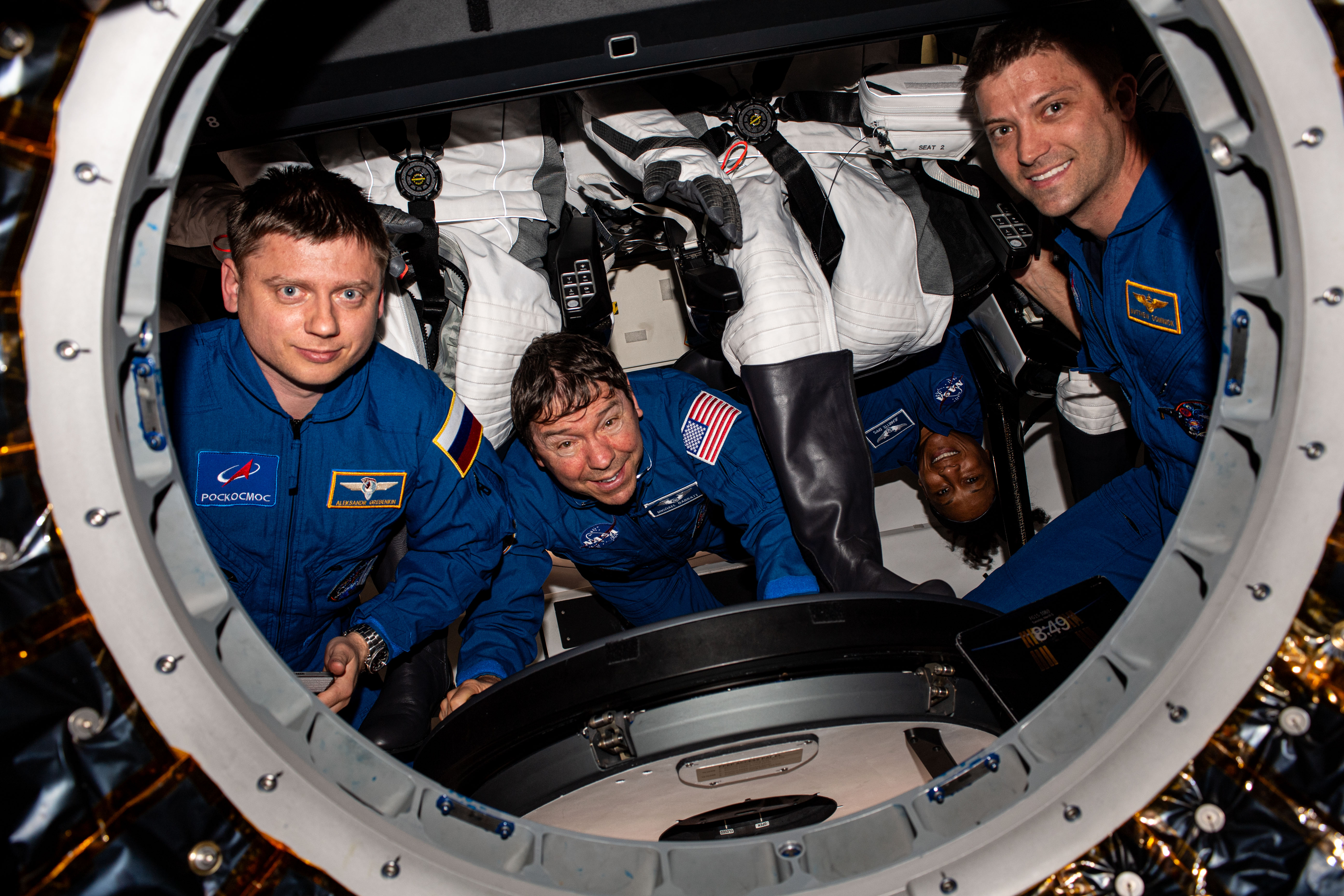
Vice President Mike Pence saw a Florida spaceport Thursday poised in the starting blocks to return America’s human launch capability, begin a new era in deep-space exploration and capitalize on emerging partnerships with private industry.
Working in close partnership with NASA’s Commercial Crew Program in a process new to human spacecraft development, Boeing and SpaceX are making independent spacecraft and launch systems to take astronauts to the International Space Station from America. Boeing is building a line of Starliner spacecraft and SpaceX is making a crewed version of its Dragon spacecraft. Both spacecraft, along with their launch vehicles, mission and launch control systems, are being certified by NASA for safety, reliability and cost-effectiveness.
Seen together, the transformation of the center shows the form of a spaceport that has embraced the potential of new partnership approaches while holding onto its heritage of success and broaden the range of exploration for the nation.
Driving through much of the launch and processing facilities spread throughout the 144,000 acres of NASA’s Kennedy Space Center, Pence saw launch pads rebuilt for the needs of privately operated rockets, former space shuttle hangars refit to serve as spacecraft factories and the assembly hall for NASA’s own deep-space exploration spacecraft, Orion.
Former astronaut Bob Cabana, Kennedy’s center director, guided the tour for Pence who was making his first stop at the center since becoming vice president. As vice president, Pence will serve as chairman of the newly reformed National Space Council that will set goals and establish policies for the United States’ space efforts.
“We are in a great position here at Kennedy, we made our vision a reality; it couldn’t have been done without the passion and energy of our workforce,” said Kennedy Space Center Director Cabana. “Kennedy is fully established as a multi-user spaceport supporting both government and commercial partners in the space industry. As America’s premier multi-user spaceport, Kennedy continues to make history as it evolves, launching to low-Earth orbit and beyond.”
Read complete coverage of Pence’s visit to the Florida spaceport at www.nasa.gov.





